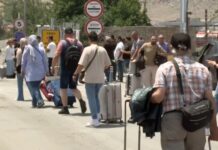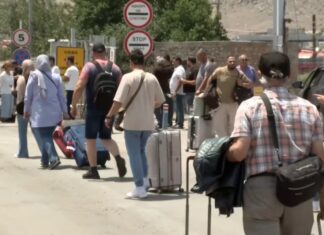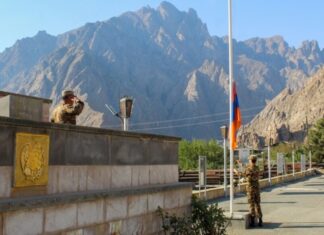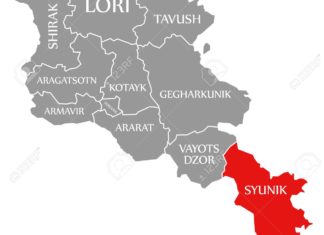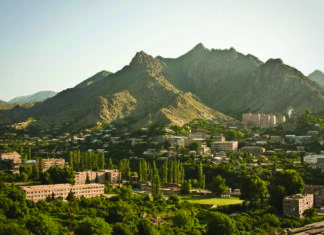By Karine Simonian, Astghik Bedevian, Shoghik Galstian
KIRANTS, Armenia (Azatutyun.am) — Residents of Kirants again blocked a local highway on Thursday, May 16, after the Armenian government resumed preparations for ceding part of the border village in Armenia’s northern Tavush province to Azerbaijan.
It is one of four disputed border areas which Yerevan has controversially agreed to give up as part of what it calls a demarcation of local sections of the Armenian-Azerbaijani border. Unlike several other Tavush villages affected by the territorial concession, Kirants would lose not only agricultural land but also some of its houses and a key bridge connecting it to the rest of the country. This is why it has been the epicenter of protests in Tavush against the planned land handover.
The demarcation process in and around Kirants was suspended on May 7 as the protest leader, Archbishop Bagrat Galstanyan, and his supporters marched to Yerevan to demand Prime Minister Nikol Pashinyan’s resignation. Pashinyan’s government announced its resumption on Wednesday night following another border protocol signed by deputy prime ministers of the two South Caucasus states. It said Baku will gain control of the four areas, including “the most sensitive Kirants section,” even though “some details there still require further clarification.”
A hundred or so angry residents of Kirants gathered on Thursday to express outrage at the announcement. They said the government has not addressed their concerns or accepted any of their proposals regarding the handover.
“The Azerbaijani border will cut through the village,” one of them told reporters. “Many village house and land holdings will fall under Azerbaijani control.”






